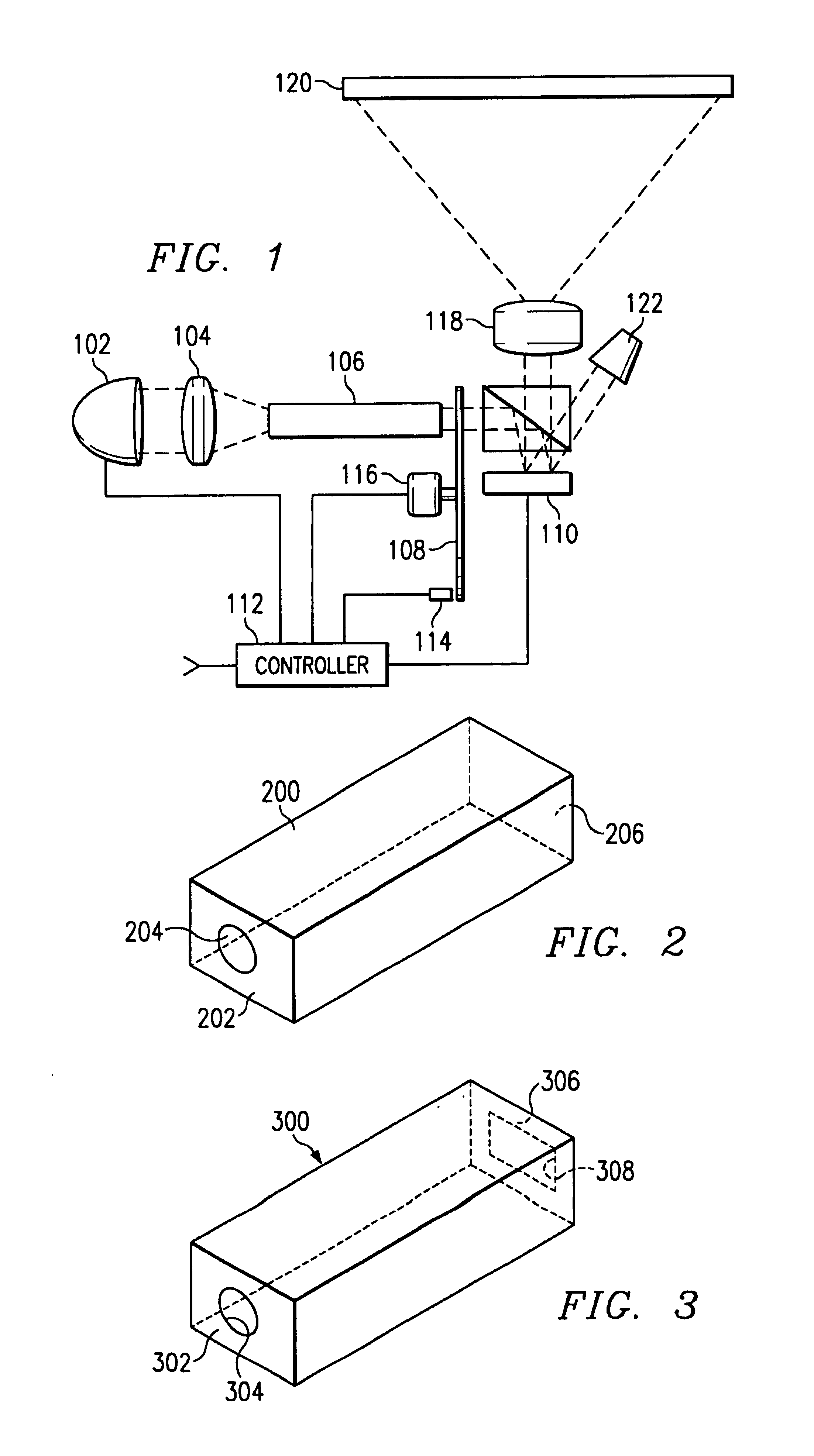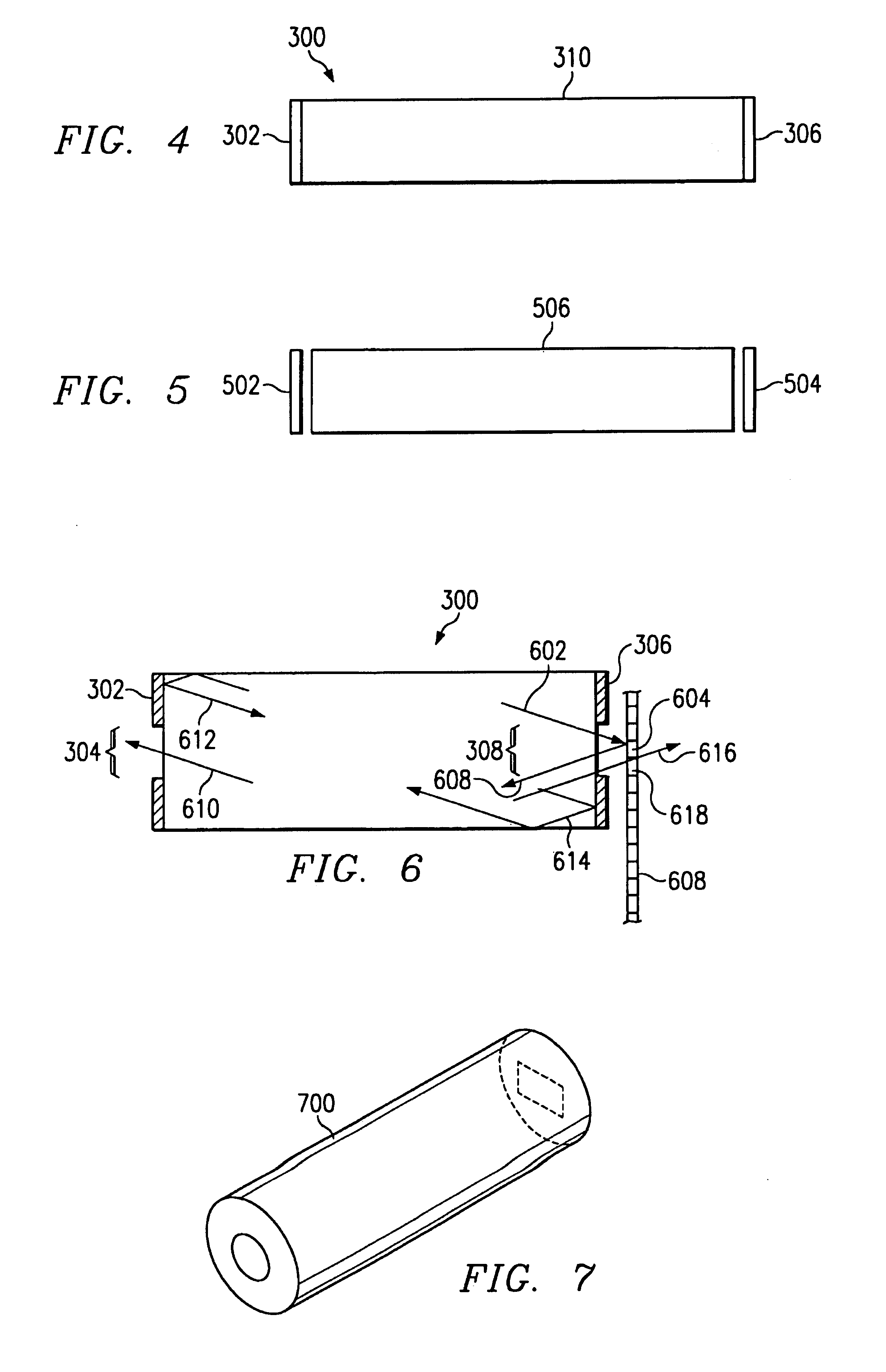Rod integrator
a technology of integrators and rods, applied in waveguides, lighting and heating apparatuses, instruments, etc., can solve the problems of increasing the cost, size and weight of the display system, unable to detect the pulsing, and large light sources, so as to increase the brightness of the display system using the integrating rods
- Summary
- Abstract
- Description
- Claims
- Application Information
AI Technical Summary
Benefits of technology
Problems solved by technology
Method used
Image
Examples
Embodiment Construction
[0028]A new method and system of illuminating a light valve has been developed. The new method provides a white light beam to three or more unique portions of a dynamic color filter, typically a color wheel. Each portion of the dynamic filter allows a band of wavelengths to pass through the dynamic filter and rejects all wavelengths outside that band of wavelengths. The rejected wavelengths reenter the illumination system and are later represented to the dynamic filter. Upon the second and subsequent application of the rejected light to the dynamic filter, portions of the rejected light are accepted by the filter and used to illuminate a light valve. The light valve modulates the selected wavelengths to produce a modulated beam of light that is focused onto an image plane. Recycling the rejected wavelengths greatly increases the potential brightness of a display system without the use of a brighter light source or additional light valves and color splitters.
[0029]The novel integrati...
PUM
 Login to View More
Login to View More Abstract
Description
Claims
Application Information
 Login to View More
Login to View More - R&D
- Intellectual Property
- Life Sciences
- Materials
- Tech Scout
- Unparalleled Data Quality
- Higher Quality Content
- 60% Fewer Hallucinations
Browse by: Latest US Patents, China's latest patents, Technical Efficacy Thesaurus, Application Domain, Technology Topic, Popular Technical Reports.
© 2025 PatSnap. All rights reserved.Legal|Privacy policy|Modern Slavery Act Transparency Statement|Sitemap|About US| Contact US: help@patsnap.com



